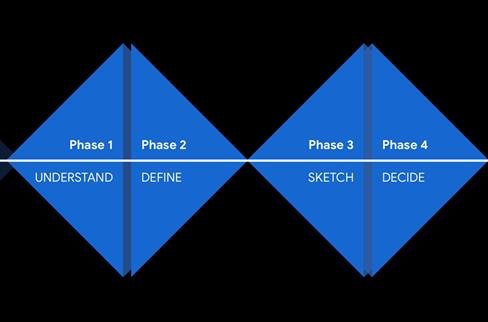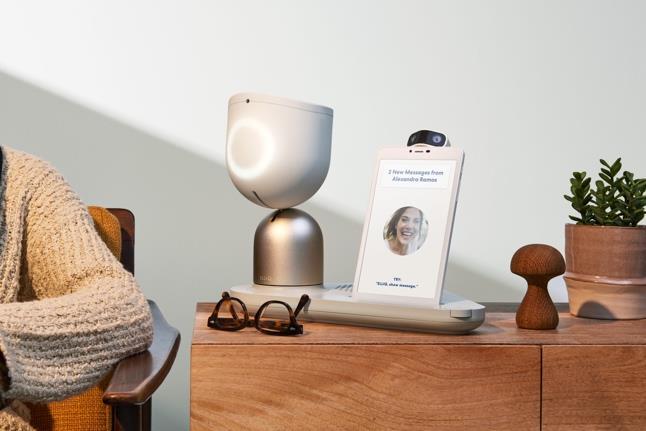

Healthy Aging, Artificial Intelligence & Hope
Presented by: Casa Farnese
In Partnership with:



Farnese Symposium
In Partnership since 2006

• The College of Medicine
• The Thomas Kline School of Law
• The College of Nursing and Health Professions
• The Antoinette Westphal College of Media Arts & Design





Healthy Aging, Artificial Intelligence & Hope
Presented by: Casa Farnese
In Partnership with:




Gold Sponsor
Silver Sponsor


Hospitality
Sponsor


Friends Of Farnese

Patron




KEYNOTE ADDRESS
George Demiris, PhD, FACMI
Mary Alice Bennett University Professor
Penn Integrates Knowledge University Professor
Department of Biobehavioral Health Sciences
NewCourtland Center for Transitions and Health Office of Nursing Research

PANEL MODERATOR
Dr. D.S. Nicholas, PhD, NCIDQ, AIA, LEED
GA, ASID
Director, MS Design Research; Associate
Professor; Coordinator, Sustainability in the Built Environment Minor, Drexel University
Antoinette Westphal College of Media Arts & Design


SYMPOSIUM PANELIST
Nora Dowd Eisenhower, JD
Volunteer State President,
AARP Pennsylvania


SYMPOSIUM PANELIST
June He, BA, MA, Associate Professor
of Product Design, Drexel University
Antoinette Westphal College of Media
Arts & Design



SYMPOSIUM PANELIST
Karen Lindgren, PhD
Chief Clinical Officer
Bancroft


SYMPOSIUM PANELIST
Michael G. Wagner, Professor and Department Head of Digital Media, Drexel University Antoinette Westphal College of Media Arts & Design



Gold Sponsor
Silver Sponsor


Hospitality
Sponsor


Friends Of Farnese

Patron



PLENARY SPEAKER
Jill Michal
Co-Founder and CEO
Kith+Kin


The Casa Farnese Research Assistantship


Healthy Aging, Artificial Intelligence & Hope Presente d by:
In Partnership with:



Casa Farnese
Artificial Intelligence and Aging: Exploring New Approaches
George Demiris PhD, FACMI
University of Pennsylvania

September 12, 2024
The Farnese Symposium on Aging
Rise of AI in health care
• Transformative leap
• Early disease detection
• Personalized treatment plans
• Streamlining administrative processes
Case Studies and Lessons Learned

Social Isolation and Loneliness


• prevalence of loneliness and social isolation among older adults grows at alarming rates globally
• Approximately 24% of community-dwelling Americans age 65 and older experience social isolation, and 43% of older adults age 60 and older report experiencing loneliness.
• link between loneliness in older adults and a range of negative health outcomes, including increased mortality, increased risk of cardiovascular disease, and accelerated cognitive decline





Active sensing and personalized interventions for pandemicinduced social isolation (NSF SCC-IRG Grant NR. CNS-2125561)
U.S. Team




Insup Lee (CSE)
Japanese Team
George Demiris (Aging and Informatics)
Oleg Sokolsky (medical IoT)
Lynette Killen (Community representative)




Hajime Nagahara (CSE)
Teruo Higashino (CSE) Teruhiro Mizumoto (IoT, smart healthcare)

Viktor Erdelyi (IoT, sensing, platform)
Technology
Nursing/ Informatics/ Gerontology
Community rep.

Manabu Ikeda (Geriatric psychology) Gondo Yasuyuki (Geriatric psychology)


Mamoru Hashimoto (Geriatric psychology)
Takashi Suehiro (Psychogeriatrics)

Nobuyoshi Taguchi (Community representative)











● Two target communities:
West Philadelphia
Shikano-dai area of Ikoma City


Use novel sensor modalities to detect and predict social state and identify effective personalized interventions




Research Study
• A single-group, longitudinal, observational study
• Sensors for six months to monitor motion, proximity, temperature, television viewing, sleep quality, and physical activity
• Mean age of the participants 73.5 years (range 67-84) (currently 28 participants in US, 23 in Japan)
• Overall acceptance
Research Study (cont.)
• privacy and trust in data sharing
• perceived benefits and concerns:
o detecting and reducing loneliness
o monitoring physiological parameters
o improving healthier behaviors
o privacy, potential misuse by authorities or third parties
o lack of accuracy of functions or feasibility of sensors
o lack of human response


•AI development cannot be done absent from recognition of the social context.
Falls

● Falls in older adults (OA) are the result of accumulated vulnerabilities.
● Cognitive impairment is a leading risk factor for falls in OA.
● Over 60% of OA with MCI fall annually – two to three times the rate of those without cognitive impairment.
● OA living in low-resource neighborhoods with poor housing conditions have twice the risk of falling.

http://www.sense4safety.org



● Technology-supported intervention to:
• link ‘at risk’ older adults with a nurse tele-coach who will guide them in implementing evidencebased individualized plans to reduce fall-risk
• identify escalating risk for falls real-time through in-home passive sensor monitoring
• employ machine learning to inform individualized plans to reduce fall risk
Capturing Gait in the Home Using Depth Data




Challenges
• Availability of broadband Internet
• Digital literacy; graph literacy
• Familiarity with technology
• Housing conditions

• Developing more robust AI innovation that is responsive to and addresses social needs in the broadest possible manner is not only a social and ethical imperative, but also an economic one.
• Intergenerational justice: how will decisions made now affect future generations?
National Academies of Sciences, Engineering, and Medicine and National Academy of Medicine. 2023. Toward Equitable Innovation in Health and Medicine: A Framework. Washington, DC: The National Academies Press. https://doi.org/10.17226/27184.
Inclusivity as a mandate for AI systems in health care
• a “digital public infrastructure” that will recognize the Internet and online platforms as public utilities accessible to all (and regulated as such)
• reflected in transparency expectations and product design for new AI systems and in reimbursement requirements
• partnerships with patient advocacy groups
• provide future health care providers with tools to advocate for accessibility of AI in health care
• rethink the role of patient navigators
• “Algorithmic paternalism can be refuted by respecting the value of patient and family wisdom as a piece of the decision-making picture by establishing clarity around the role of power and voice in decision-making.”
McCradden, M.D., Kirsch, R.E. Patient wisdom should be incorporated into health AI to avoid algorithmic paternalism. Nat Med 29, 765–766 (2023). https://doi.org/10.1038/s41591-023-02224-8
Stakeholder engagement in AI and aging
• examine if/ how older adults have been involved in the design, implementation, and evaluation of AI systems (~1,979 studies focusing on AI and aging)
• scoping review
• 17 studies for final review; about half (n = 8) engaged older adults during the design phase, 3 during the evaluation stage, 2 in the implementation stage
• methods of engagement: interviews, workshops based on participatory design and co-creation/co-design, demonstration sessions, surveys
Cho H, Oh O, Greene N, Gordon L, Morgan S, Walke L, Demiris G. Engagement of OlderAdults in the Design, Implementation and Evaluation ofArtificial Intelligence Systems forAging:AScoping Review. Journal of Gerontology: Medical Sciences (Under Review)
Companionship


Digital companion tools-Embodied Conversational Agents (ECAs)
• interact with users through verbal and non-verbal behavior cues such as prosody (pacing and intonation) and movements/ gestures.
• small number of studies
• tested within laboratory settings or only tested with one user only
• no longitudinal assessment
• only conversation, or focused on one aspect of interaction or served a single purpose (for example, exercise coaching or reminders)
Study Aim
• examine the feasibility of digital companion systems in real world settings used by older adults with mild cognitive impairment in their natural environment and for a longer period of time.
• utilized a system that is comprehensive in its functionalities to explore the system’s impact on older adults’ social interactions, anxiety and depressive symptoms, and participants’ acceptance of the system.
Methods
• three-month mixed methods evaluation study of an existing commercially available digital companionship device
• recruited community-dwelling older adults with MCI

Intervention
• virtual pet displayed on a tablet (Gerijoy by care.coach)
• interacts with the older adult through voice and expression
• provides reminders and prompts, uses pictures and multimedia to facilitate sensory awareness and memory support

Motivation
• “it’s just an adventure; like, I like going to the secret film festival because we don’t know ahead of time what movies we’re going to see.”
• “I will have something to look forward to play with to do, something with each day.”

Benefits

• “checking on you regularly and asking if things are ok when [the pet] hears a strange noise or sees something strange.”
• “I would have it right next to my chair, the hearts would go. When people would come, they’d say, “What’s that?” I said, “Those are just little love notes.”
• “I talked to him about the bird bath that I have out there, and the two crows who are really funny in it. He found a birdbath with some crows in it on Google. He was always very good-very sensitive to what I was trying to do.”
Weaknesses
• “I wish it was something you can hug, that you can touch, like a real cat or dog.”
• communication was at few times problematic: limited vocabulary, being repetitive in its questions, not remembering details of previous conversations or interrupting at inappropriate times
• participants commented on the sensitivity that the “pet” showed as a conversation partner


https://www.pennaitech.org


• National pilot competition program
• Each year approx. 10-15 pilot projects are funded
• In Years 1 and 2 a total of $4.4M awarded
• Year 3 competition ongoing
• https://www.pennaitech.org
A Multidisciplinary Collaborative


A National and Cross-Sector Competition


Themes
• Diagnostic Assistance
• Personalized Medicine
• Remote Monitoring and Telemedicine
• Patient Risk Identification
• Administrative Workflow Assistance
• Mental Health Support
“Most of the damage that the computer could potentially cause, depends less on what the computer actually can or cannot do than on the qualities that the public attributes to the computer.”
J. Weizenbaum, creator of ELIZA

Weizenbaum, J. Computer Power and Human Reason: From Judgment to Calculation (W. H. Freeman, 1976).
George Demiris
gdemiris@upenn.edu

@GeorgeD5PHL




It Takes a Village Farnese Symposium Panel

AGING TECHNOLOGY AND HOPE
DIGITAL FIRST
Digital First is AARP's commitment to accelerating our digital transformation to meet rapidly evolving consumer expectations and deliver compelling value how, when, and where people want it.
WHY DIGITAL FIRST, WHY NOW?
∙ Our 50+ consumers are increasingly digitally savvy, with technology adoption rates soaring
∙ We're in a trusted position to help those less comfortable get digitally engaged
∙ It also means that we will still recognize that some of our members are not yet ready – we are not “digital only”
∙ AARP is financially sound, technologically capable, and more experienced after pivoting digitally during the pandemic
WHAT DOES IT LOOK LIKE?
∙ Designing this new digital-first mindset will impact all parts of the enterprise
∙ We must all be consumer-obsessed, bold in thinking, and quick to innovate
∙ Our "north star" is making aging with confidence easier than ever through digital transformation
∙ Moving from "digitized" to a truly "digital-first" organization
∙ Critical to being consumer-centric, resilient and agile in meeting changing demands
REAL LIFE EXAMPLES
∙ Virtual Exercise classes run by volunteers
∙ Digital Membership in AARP – AARP will maintain its magazine and the Bulletin, but it will offer an all-digital membership that includes digital publications.
∙ Education - Teaching people how to protect themselves against AI Fraud
∙ Memory Cafés –Recently, AARP held memory cafes via Zoom for individuals who couldn’t attend in person. These were all in-person offerings designed to facilitate social connection among people with dementia or mild cognitive impairment in a fun, inclusive environment.
OUR "NORTH STAR" IS MAKING AGING WITH CONFIDENCE EASIER THAN EVER THROUGH DIGITAL TRANSFORMATION
Autism and Aging meet AI PICTURE
● How can AI engage adults with intellectual disability & autism?
● Does an AI-”powered” robot improve quality of life for individuals aging with autism and intellectual disability?
● How do the unique characteristics of autism drive the value of these interactions?

AI and the DSP Workforce Crisis
● Can the robot “do the dishes” for our DSPs?-- and what does that mean for our employees?
● Can this technology extend our workforce to meet the growing needs of this population?
● How can human service providers partner with design and technology experts?

Direct Support Providers (DSPs)
1.3 million workers in US
Turnover is high-- 45-65%
Pay is low
By 2030: An estimated 1.1 million additional workers will be needed- with a shortage of about 500,000 workers
Co-Create Workshop in SEAMAAC
• How can we bring innovation to aging immigrant community?
• How to conquer various barriers across age, culture and language?
• How do we use empathic design to understand older users’ needs?



Photo credit: Khue Dao

Co-Design Workshop in Philadelphia
Senior Center
• How do we use AI to help elevate older adults’ quality of life?
• How can we use AI to advocate voices from marginalized communities?


Photo from June He
Farnese Symposium
September 12, 2024
The Future of the Creative Fields in
a Time of Uncertainty

Michael G Wagner





1) Critical Skills
In the era of generative AI, critical skills become increasingly important:
• Critical reading, seeing, and listening
• Critical thinking and making

2) Process Focus
In the era of generative AI, the focus shifts from the final output to the creative process itself, emphasizing the importance of the intent and purpose behind the creation.

2) Agile Structures
In the era of generative AI, educational institutions must adopt organizational structures that enable them to adapt and respond to rapidly evolving societal demands.

The design sprint @




minutes)
CHARGE:
is a
INSIGHTFUL DESIGN THINKING

BASED ON


We are doing a mini sprint


PHASE 1: UNDERSTAND FIND YOUR TOPIC
TEAMS: PINK AND BLUE
01 HOME HEALTH + MEDICAL DEVICES
TEAMS: GREEN AND RED
02 DIGITAL SAFETY & SOCIAL CONNECTEDNESS
TEAMS: PURPLE AND YELLOW
03 CAREGIVER SUPPORT
TEAMS: ORANGE AND GREY
WHAT IS ON YOUR RADAR?
04 ACTIVITY OF DAILY LIVING ASSISTIVE DEVICES
TEAMS + TOPICS
COLOR TOPIC
PINK AND BLUE HOME HEALTH + MEDICAL DEVICES
GREEN AND RED DIGITAL SAFETY & SOCIAL CONNECTEDNESS
PURPLE AND YELLOW CAREGIVER SUPPORT
ORANGE AND GREY ACTIVITY OF DAILY LIVING ASSISTIVE DEVICES

CHRISTIAN JORDAL
PHD, LMFT, CST-S
Chair; Associate Clinical Professor
Counseling and Family Therapy Department
Christian Jordal, PhD, is the chair and an associate clinical professor of the Counseling & Family Therapy Department at Drexel University. He has been at Drexel since 2012. He formerly taught foundational, contextual and supervisory graduate and undergraduate courses in couple and family therapy, counseling psychology, and human development at the Northcentral University, University of Oregon and Virginia Tech.

LAURA A. BAEHR PT, DPT, PHD
Assistant Professor
Physical Therapy and Rehabilitation
Laura A. Baehr is a clinician-scientist accelerating empowerment, access and equity in community-based physical activity programs for people with disabilities and chronic health conditions. She is informed by her interdisciplinary trainings in rehabilitation science, physical therapy and dance to center evidence-based interventions on the lived experience of the individual. Laura earned her PhD in Health and Rehabilitation Science from Drexel University, Doctor of Physical Therapy (DPT) from Temple University and dual Bachelor of Arts and Sciences in Dance and Neuroscience from Muhlenberg College.

STEP 1:
WHAT IS ON YOUR RADAR?
TIME: 10:55am - 11:10 am (15 minutes)
● CREATE AN INVENTORY OF ALL THE THINGS YOU KNOW ABOUT WITHIN THE TOPIC AREA
● ONE THING PER MINI POST IT
● POPCORN THE POST ITS ON THE FRONT OF YOUR FOLDER
2 - 3 people
Some examples











PHASE 1: UNDERSTAND FIND YOUR TOPIC
Where we see TECHNOLOGY being used: FOR
● Home Health + Medical Devices
● Digital Safety & Social Connectedness
● Caregiver Support -- Digital First and Kith & Kin app
● Activity of Daily Living Assistive Devices IS ARTIFICIAL INTELLIGENCE PART OF IT?
WHAT IS ON YOUR RADAR?

STEP 2: WHAT IS ON YOUR RADAR?
TIME: 10:55am-11:10 am (15 minutes)
2 - 3 people PLACEYOURPOST-ITS ONTHE RADARDIAGRAM PROVIDED DISCUSSPRIORITIES WHILEDOINGTHIS PLACE ON


STEP 3: WHAT IS ON YOUR RADAR?
SELECTTWOPRIORITY ITEMS TOBRINGTOTHE LARGERGROUP
TIME: 11:10 -11:15 am
(5 minutes)
2 -3 people


MOST IMPORTANT

PHASE 2: DEFINE THE PRINCIPLES
TIME: 11:15 am - 11:30 am (15 minutes)
8-10 people
INTRODUCTIONS
SmallGroups:
DISCUSSYOURTOPTWO PRIORITIESINTHELARGER GROUP
PLACEONEFROMEACH SMALLERGROUPONTHE PRINCIPLEMATRIX


PHASE 3: SKETCH
THE PRINCIPLES
TIME: 11:30 am - 11:45 am (15 minutes)
WORKINGFROMLEFT TORIGHT
RE-DEFINEEACH OBSERVATIONTOFIT WITHTHEVERTICAL CATEGORIES
8-10 people



PHASE 4: DECIDE THE PRINCIPLES
TIME: 11:45 am – 12:00 pm (15 minutes)
8-10 people

SYSTEMAITC HUMANESS
COMMUNITY
NETWORK SERVICES
IT TAKES A VILLIAGE
LIFECYCLE OF PRIVACY CONCENRS
HOW SAFE IS THE DATA
ADL GROOMING MEAL PREP AND DAY TO DAY
ESSENTIAL ASPECT HOME
SAFETY
LAYOUT
DISTANCES/ OBSTACLES
ACCESSIBILITY
SEAMLESS AND INTEGRATED HUB
CENTRALIZED
CUSTOMIZED TO THE CLIENT
YOUR GROUP IDEAS
TRUST ACCESSIBILITY
HUMANITY CARE TECH
TROUBLESHOOTING
EASY USE OF TECHNOLOGY
SAFETY AND ACCESS TO ALL TECH AND COMMUNICATION BLOCKAGES
Universal l design Seeing AI on On mac but not android Unversality!
WHOLE PATIENT
YELLOW
CAREGIVER SUPPORT
LARGEST PRI FAMILY ENGAGEMENT
RELIABILTIY
HEALTH CARE AS A TEAM
SPORT NETWORK PROVIDERS AND FAMILY
EYEGLASSES / DATA CAPTURE COMPLEXITY AND BUNDILING RIGTH BALANCE OF SOPHISTICATION AND TECH MISSION CREEP?
ONE THING THAT DOES IT WEL
ROOT OF FOUNDATION IS FAMILY AND FIGURING OUT THE UNDERLYING ISSUES
MORE FAMILY TALKS
RESOURCE NAVIGATORS – TO NAVIGATE THE SYSTEM
CAREGIVER AS CAREER CHOICE IMPROVE PAY AND OPPORTUNTIES
ELEVATE SKILL SETS
EMPATHY NEEDS TO BE BROUGHT FORTH MORE!


ConsumerHealth
What did wemiss?

First and foremostweignoredtheconsumer...

WhereAreWeGoingWrong?

Tryingtochange vssupport humanbehavior


Believingthat dataalonesolves theproblem

Notrecognizing thathealthisa teamsport


PAPERWORK


The Human Problem




EMAILS


TEXTS



PICTURES CALLS

FILES&DOCS



Health Tech Care Tech





TheHealth ConsumerToolkit
What consumersneed tobe successful:
● alltheir information ● for alltheir people ● allinoneplace ● using simpletools they know howto use ● with informationand insights they understand
HowInformationDrivesImpact
Health experienceand outcomesimprovewhen patients andthe members of their support circleareable to actively participatein care.
Inordertodoso,healthinformationneedstobe:
Available
● Accessibleinoneplace
● Shareabletocaregivers, family,etc.-right person, right place, righttime
Understandable
● Termsandguidance peopleunderstand
● Informationvs data centric
Actionable
● Supportsvschanges existing humanbehaviors
● Engagesthepatient’s supportcircle

What’s in a Name?

TheKinKeeperApp





TheEngagement
Traditionalhealthinformation tools areconfusing and underutilized 70% ofpatient portalusers access their portalless than 6 timesper year*
KinKeeperengagement is 10-20Xtheaverageportalengagementrate
70%ofusers
usetheapp anaverageof 56times peryear
25%ofusers
use the app anaverage of 127times peryear
* 2023 ONC Study on Individuals’ Access and Use of Patient Portals
TheImpact
91%
of users report feeling moreconfident managing theirhealthinformation
of users say Kith +Kinhas helped to reduce the stressofcaregiving 88%
83%
of users say Kith +Kinhas helped to reduce timespentmanaginghealth information

“
Being a caregiver to two elderly parents who live out of state, this app has been such a blessing to my family and I.
-Heather
I feel less overwhelmed knowing that my dad’s caregivers will have access to the information they need ifI can’t be there.
-Emily
TheRoleofAIinHealthcare







Being
Diagnosed with Diabetes Learning About Your Condition
Knowingthe Warning Signs for Your Body
Havingthe Skills toManage Your Condition
